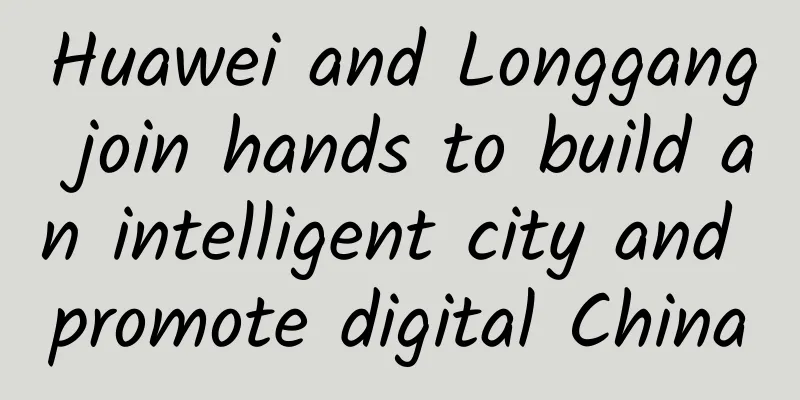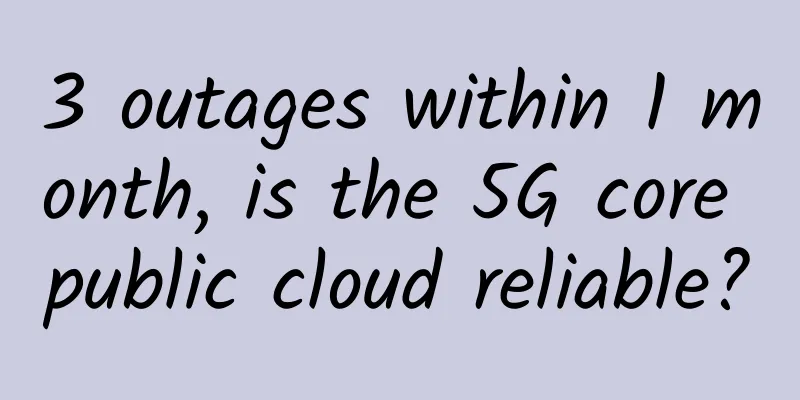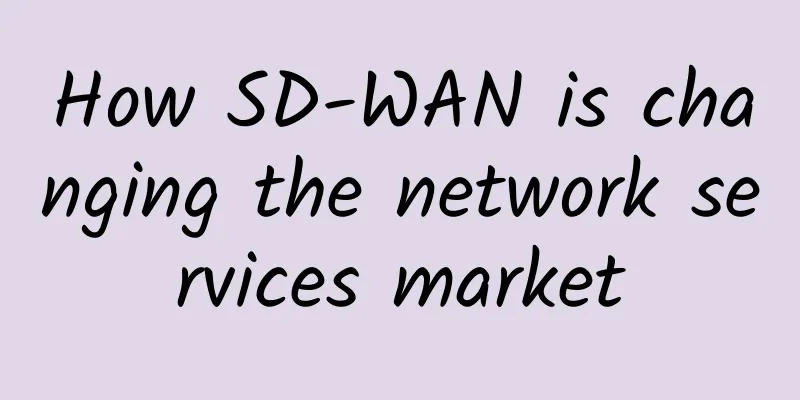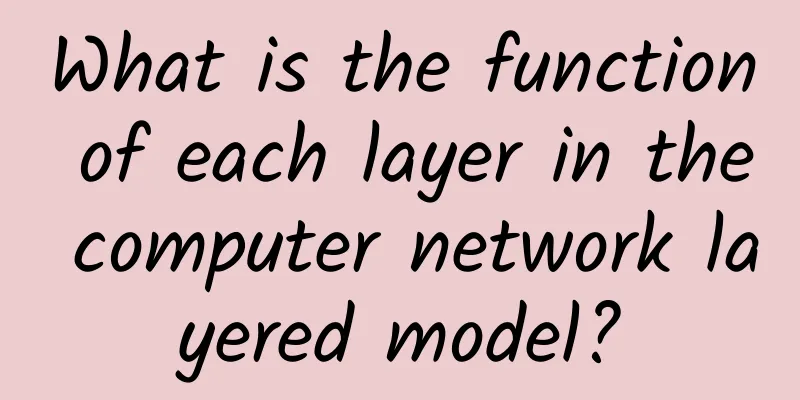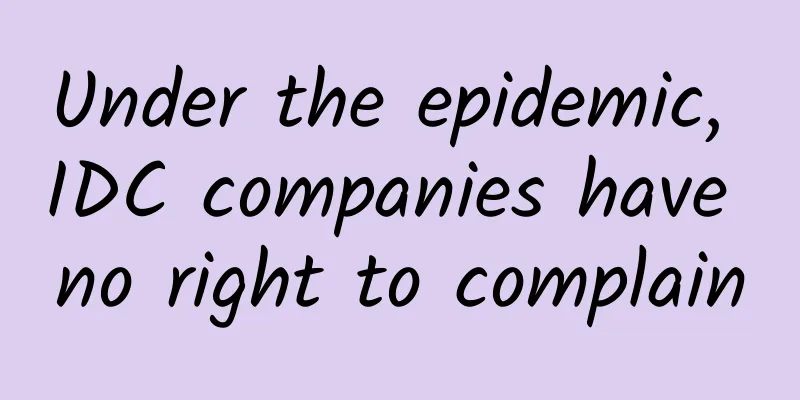Let’s continue to talk about what communication is?

|
Continuing from the previous article "Let's talk about what communication is?" I didn’t finish writing last week, so I’ll continue writing today. Layered Thinking in CommunicationThe most important first step in studying communication technology is to build a communication knowledge system. The secret to building a communication knowledge system is to establish "layered thinking". The layered thinking of communication is divided into "big layer" and "small layer". Let’s first look at the “big layer”In the above article, I told you about the evolution of communication networks. An important driving force for the evolution of communication networks is the rapid expansion of the number of communication nodes. In other words, the communication network is a process from "point to point" to "point to multipoint", and then from "point to multipoint" to "multipoint to multipoint". The number of nodes involved in communication expanded rapidly, eventually reaching the scale of hundreds of millions (Internet of People) or even tens of billions (Internet of Things). The most primitive and basic communication model is that two nodes communicate with each other. In this case, a single communication line is sufficient. When there are more than two nodes involved in the communication, networking is involved, which includes chain, star, ring, tree and other networking modes. As the scale of nodes continues to expand, people have discovered that, just as the pyramid management structure is the most practical human organizational structure, the tree network structure is the simplest and most efficient way to network for large-scale communications. Tree type (pyramid type) This method of "small networks gradually converging to form a large network" is a typical centralized networking method. Regardless of the networking method, as long as there are multiple nodes, routing and switching are involved. In other words, at each aggregation node, the communication data needs to be routed and the information content needs to be exchanged, which is equivalent to an intersection or gateway. Each node needs to make a judgment Tree networks are widely adopted by operators and have become the foundation of public communication networks. (Of course, other networking methods such as ring networks are also appropriately adopted as supplements.) For a tree-type network that is constantly "converging", we generally divide it into three layers, from bottom to top: access layer, convergence layer, and core layer. The access layer is responsible for connecting users to the network; the aggregation layer is responsible for collecting and distributing data; and the core layer is the backbone of the network. We can think of it as a courier company. There will be a courier station near each community to reach users, collect and deliver express. The goods at the courier station will be sent to the next level courier transfer point, and then to the next level, and transferred step by step. Different layers involve different communication technologies. That is to say, the communication technologies used between nodes are not necessarily the same, because they are in different environments and conditions, and the amount of data they carry is also different. For example, at the access layer, users need to be connected to the network. Since users may be mobile and move around, wireless communication technologies will be widely adopted, such as 4G/5G, Wi-Fi, etc. 5G Antenna At the aggregation layer, because the amount of data aggregated is very large, the aggregation nodes and upper-layer nodes usually adopt large-capacity fiber-optic communication technology (such as OTN). Fiber Optic Equipment Of course, if the distance between the access node and the upper node is far, and it is located in a remote area such as a desert, then wireless communication technologies such as microwaves and satellites will also be used. Microwave Antenna To use the express delivery system as an analogy, the couriers at the express delivery stations ride tricycles and freely choose routes, while between express delivery transfer points, direct transportation is carried out by car or chartered plane. What we have discussed above is the layered thinking of network architecture, which is also called "big layering". The layering levels of networks of different sizes may not be the same, but the layering idea remains the same. What is "small layering"?When you study specific point-to-point communications, you will encounter the "small layer" thinking. Students with an engineering background all know the famous TCP/IP model and the OSI model, which are typical "small layers". Communication is a very complex process. The reason for the "small layers" is to ensure that each layer has its own responsibilities. Each layer is a society. Different layers do not have the same "language (protocol)" and cannot communicate directly. Regardless of the communication technology, it actually follows the "small layer" model, but the protocols chosen are different. "Small layers" is actually the "packaging" idea of express delivery - I write the words on letter paper, put the letter paper into an envelope, and then seal the envelope into a larger envelope, or a mail bag or parcel. In this way, after being packaged level by level, it is sent to the other party. After receiving the message, the other party will unpack it step by step and interpret the content. Alternatively, the content will be packaged step by step and sent to the next node through another channel. "Small layers" have a more sophisticated name, which is "protocol stack". Each of my layers must match each of your layers, so that we can achieve top-level business communication. Protocol stack example for 4G network Communications, especially public network communications of operators, often involve joint debugging between the local office and the opposite office. Newcomers often fail to understand the concept of "small layers" and randomly allocate data, but the result is still not working. The correct method for joint debugging is to start from the bottom layer. First check whether the physical layer is connected (whether there is light on the optical port and electricity on the electrical port), and then connect upward layer by layer. When each layer is connected, the business between the local office and the remote office is connected. In short, "big layer" thinking is used to study the overall architecture of the communication network. "Small layer" thinking is used to understand the specific working principles of communication technology. With these two types of thinking, you will have a clear idea when studying any communication technology. Wired and wireless communicationsWe have mentioned wired and wireless communications before, but here we will introduce their differences in detail. In the history of modern communications, the birth of wireless communication is not too late. However, for a long time after its birth, this technology was a "noble" technology, and only a small number of people could use it. The reason is simple. Due to the deficiencies in the early development of basic technologies such as electronic technology, material technology and signal processing technology, humans do not have the ability to perfectly control radio electromagnetic waves. After the foundation of radio electromagnetic theory was laid, people have been trying to utilize this mysterious power of radio electromagnetic waves. Radio waves of different frequencies (wavelengths) have different physical properties. Humans have developed radio waves by using these different properties for different purposes. For example, high-frequency gamma rays have great lethality and can be used to treat tumors. From a macroscopic perspective, radio waves are mainly divided into radio waves and light waves (as shown above). Marconi and Popov pioneered the use of radio waves for communication. With the level of technology at the time, they could only use low-frequency radio waves for wireless communication. Radio waves are not an "inexhaustible" resource. Their scarcity is reflected in the spectrum (frequency range). Within a certain spatial range, once a radio wave of a certain frequency is occupied, if others also try to use it (transmit signals of that frequency), interference will occur. The advantage of low-frequency radio waves is that they can be transmitted over longer distances. As we all know, radio electromagnetic waves with lower frequencies have longer wavelengths (frequency × wavelength = speed of light, which is a constant value) and stronger diffraction capabilities, so they can be transmitted over longer distances. The higher the frequency, the shorter the wavelength will be, the worse the diffraction ability will be (the penetration loss will also be greater), and the propagation distance will be shorter. The disadvantage of low-frequency radio waves is that they are very scarce. If FDMA frequency division multiple access is used, the number of users accommodated is very small, and it cannot be perfectly used for public mobile communications. Later, with the continuous breakthroughs in basic technologies, we had multiplexing technologies such as TDMA, CDMA, and OFDMA, which could accommodate more users with a small amount of frequency resources. To give a simple example, we imagine the frequency resources as a room. If the room is divided into different spaces, and different users chat in different rooms, this is frequency division multiple access (FDMA). If in this room, one person is allowed to speak at a certain time and another person is allowed to speak at the next time period, it is time division multiple access (TDMA). If everyone speaks their own language, some speak English, some speak French, and some speak Chinese, that is code division multiple access (CDMA). At the same time, we also have the ability to drive higher frequency radio electromagnetic waves, which further expands the frequency usage range of wireless communications, ultimately achieving the continuous expansion of communication capacity and the continuous improvement of connection speeds. This is just like a highway. The wider the road, the more vehicles it can accommodate at the same time. Moreover, the larger the type of vehicle it can accommodate, the greater the transportation capacity of the highway. We have also made great breakthroughs in coding and diversity technologies, gradually understanding the characteristics of this mysterious technology of wireless communication, further reducing the bit error rate and improving the efficiency of wireless channels. In this way, we have had a continuous evolution from 1G to 5G, successfully developing wireless communication from a "noble" technology to a "mass" technology, allowing everyone to enjoy the convenience it brings. The main advantages of wireless communication technology are that it breaks the limitations of space and mobility, and saves costs appropriately. If we simply compare performance (such as transmission rate, latency, stability, etc.), wireless communication is completely beaten by wired communication. Interestingly, although today’s wired communications are powerful, they are essentially the product of wireless communications. Early wired communications have always used wired metal cables with electrical signal pulses for communication. In the 1960s and 1970s, optical fiber emerged and broke this situation. Fiber optic communication uses light waves, and light waves are radio electromagnetic waves, right? However, traditional wireless communication is transmitted in the air, and the transmission path is too complicated, with too much interference and too much uncertainty. Therefore, optical fiber communication confines light waves to a pure glass fiber core for transmission, isolating them from the outside world, which greatly improves stability. Wireless communication VS fiber optic communication This is like a closed dedicated lane or a high-speed railway, which can speed up as much as possible to improve efficiency. Optical fiber is truly one of the greatest inventions in human history. It achieves the greatest benefits at the lowest cost. optical fiber Imagine if we had no optical fiber but only metal cables, how much precious metal would we need to use to realize the current dense communication backbone network? If these costs were passed on to users, how expensive would our communication costs be? At present, it is an irresistible trend for optical fiber to replace metal cables. The backbone networks and access networks of telecommunication operators have long realized the “optical fiber replaces copper cables”. The main drawback of fiber-optic communication at present is that it is still relatively fragile physically. In addition, fiber-optic fusion splicing has a certain technical threshold, and the cost of optical interfaces and optical modules is still slightly high, so it cannot completely replace network cables. But for the foreseeable future, fiber optics will run to every computer, every TV, and everything else that requires a wired connection. The goal of human communication development is to use optical fiber for all wired communications and high-efficiency wireless air interface technologies (such as 4G/5G/Wi-Fi 6) for all wireless communications. Together, they will support the huge scale of human connections and bandwidth needs. Well, that's all for today's article. Thank you for your patience! |
<<: Why is HTTP 2.0 designed this way?
>>: Smartphones supporting Wi-Fi 6/6E will dominate the market by 2025
Recommend
In the post-epidemic era, how can enterprises calmly cope with new IT challenges? SolarWinds helps you stay at the forefront of the times!
[51CTO.com original article] In the golden autumn...
Ruijie Networks 2019 Partner Conference held: Join hands with partners to seek growth and work together to soar
On March 6, the Ruijie Networks 2019 Partner Conf...
IDC Commentary: What are the remaining obstacles to China's 5G?
With the news that Nokia and Ericsson won the bid...
ServerKurma: $3/month KVM-2GB/20GB/1TB/Türkiye VPS
ServerKurma is a foreign hosting company founded ...
What is the relationship between the Internet of Things and the Internet, when will the explosion occur and what are their uses?
Name Explanation The Internet of Things is an imp...
Microsoft launches Viva: an employee experience platform based on Teams
[[391893]] Microsoft today unveiled Viva, its emp...
What is the use of "5G+AI"? This comic tells you the answer...
[[425909]] This article is reprinted from the WeC...
Top 10 Cyber Threats to Private 5G/LTE Networks
We all want devices to communicate with each othe...
How to start learning socket programming for beginners
Sockets are endpoints for communication between n...
ServerHost: $1/month KVM-1GB/15GB/1Gbps unlimited traffic/8 computer rooms available
Today's topic is $1 VPS, and here's the i...
Review of the optical fiber industry in 2016: The east wind overwhelms the west wind, and quantitative changes induce qualitative changes
[[181005]] For the optical fiber industry, 2016 i...
LOCVPS: Los Angeles VPS 40% off, 1G memory, 30G hard disk, 400GB monthly traffic starting from 22.2 yuan per month
LOCVPS is a Chinese VPS service provider founded ...
How to effectively manage network communication data? Egress traffic monitoring can reduce the burden on the network
Informatization has gradually penetrated into all...
5G will become a necessity in our future
Most of the 5G networks currently available are n...
Smart homes need smarter Wi-Fi
Today's homes feature an increasing number of...


